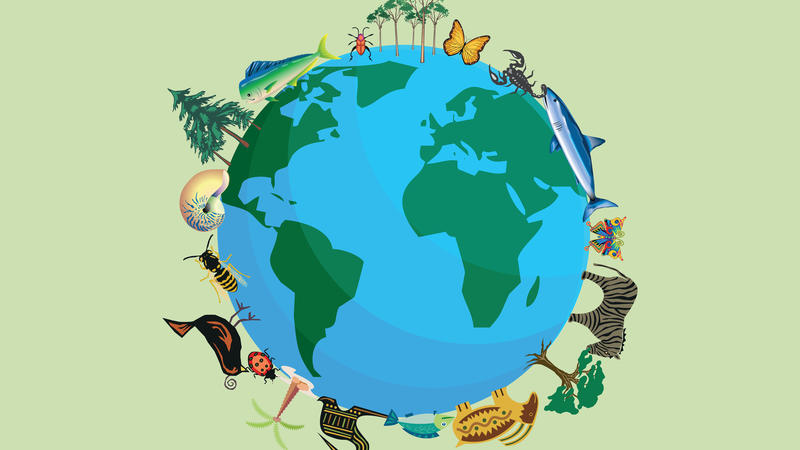Introduction
Biodiversity, the variety of life on Earth, encompasses the diversity of species, ecosystems, and genetic variation within species. It is a cornerstone of ecological health, supporting ecosystem functions and providing essential services such as clean air, water, and fertile soil. Despite its importance, biodiversity is under severe threat due to human activities such as deforestation, pollution, climate change, and overexploitation. Non-Governmental Organizations (NGOs) are at the forefront of efforts to protect biodiversity and restore ecosystems. This article explores the significance of biodiversity, the threats it faces, and the vital role NGOs play in safeguarding our natural heritage.
Keywords: biodiversity, NGOs, ecosystem protection, endangered species, habitat preservation, conservation strategies, ecological balance, species recovery, environmental advocacy, biodiversity conservation.
Section 1: Understanding the Importance of Biodiversity
1.1 What is Biodiversity?
Biodiversity refers to the variety of life forms on Earth, including:
- Species Diversity: The variety of different species within an ecosystem, such as plants, animals, fungi, and microorganisms.
- Ecosystem Diversity: The range of different ecosystems, such as forests, wetlands, grasslands, and marine environments, each with its unique community of organisms.
- Genetic Diversity: The variation in genetic material within species, which is crucial for adaptability and resilience.
1.2 Why is Biodiversity Important?
Biodiversity is crucial for several reasons:
- Ecosystem Services: Biodiverse ecosystems provide essential services such as pollination of crops, regulation of climate, purification of air and water, and nutrient cycling.
- Economic Value: Biodiversity supports industries such as agriculture, fisheries, and pharmaceuticals, providing resources and opportunities for economic development.
- Cultural and Aesthetic Value: Many cultures value biodiversity for its spiritual, recreational, and aesthetic significance, contributing to human well-being and quality of life.
- Resilience and Adaptability: Diverse ecosystems are more resilient to disturbances and environmental changes, providing stability and adaptability in the face of challenges like climate change.
1.3 The State of Global Biodiversity
Biodiversity is rapidly declining due to:
- Habitat Loss: Deforestation, urbanization, and agricultural expansion lead to the destruction of habitats and loss of species.
- Pollution: Contamination of air, water, and soil affects ecosystems and wildlife health.
- Climate Change: Altered weather patterns and temperatures disrupt ecosystems and threaten species.
- Overexploitation: Overfishing, hunting, and illegal wildlife trade deplete species and disrupt ecological balance.
- Invasive Species: Non-native species introduced by human activities outcompete native species and alter ecosystems.
Section 2: How NGOs are Protecting Ecosystems and Species
2.1 Conservation Strategies and Initiatives
NGOs employ various strategies to protect biodiversity:
- Protected Areas and Reserves: NGOs establish and manage protected areas to safeguard critical habitats and species. For example, the World Wildlife Fund (WWF) supports the creation of national parks and wildlife reserves to protect endangered species and ecosystems.
- Habitat Restoration: Restoration projects aim to rehabilitate degraded ecosystems and restore their ecological functions. Organizations like The Nature Conservancy work on reforestation, wetland restoration, and land reclamation to enhance biodiversity and ecosystem health.
- Species Conservation Programs: NGOs implement programs to protect endangered species and prevent extinction. The Wildlife Conservation Society (WCS) runs species recovery initiatives, including anti-poaching efforts and breeding programs for critically endangered animals.
2.2 Community Involvement and Education
Engaging local communities is essential for successful conservation:
- Community-Based Conservation: NGOs involve local communities in conservation efforts, empowering them to protect and manage natural resources. For instance, the African Wildlife Foundation (AWF) supports community-led conservation projects that integrate wildlife protection with local livelihoods.
- Education and Awareness: NGOs raise awareness about the importance of biodiversity and conservation through educational programs and campaigns. The Jane Goodall Institute promotes environmental education and community engagement to foster a conservation ethic among local populations.
- Capacity Building: NGOs provide training and resources to local communities, enabling them to implement sustainable practices and conservation measures. The Global Wildlife Conservation (GWC) offers training programs for community rangers and conservationists.
2.3 Policy Advocacy and Research
Advocacy and research are crucial for influencing conservation policies:
- Influencing Legislation: NGOs advocate for policies and regulations that protect biodiversity and promote sustainable practices. The International Union for Conservation of Nature (IUCN) works to shape international agreements and national policies for biodiversity conservation.
- Conducting Research: NGOs conduct scientific research to inform conservation strategies and monitor biodiversity. The Center for Biodiversity and Conservation (CBC) carries out research on species populations, habitat conditions, and ecosystem health to guide conservation efforts.
- Monitoring and Reporting: NGOs track and report on biodiversity trends and conservation outcomes, holding governments and organizations accountable for their commitments. The Biodiversity Monitoring Network (BMN) provides data and reports on the state of global biodiversity.
Section 3: Success Stories of NGO-Led Conservation
3.1 Reforestation Projects
Successful reforestation projects highlight the impact of NGO efforts:
- The Eden Reforestation Projects: This organization has planted millions of trees in deforested areas around the world, restoring ecosystems and providing benefits to local communities. Their projects focus on reforestation, sustainable agriculture, and community development.
- The Great Green Wall Initiative: Led by various NGOs, this initiative aims to combat desertification and restore 100 million hectares of degraded land in Africa. The project involves tree planting, soil conservation, and community engagement to build a green barrier against desert encroachment.
3.2 Species Recovery Programs
Notable species recovery programs demonstrate the effectiveness of targeted conservation efforts:
- The Giant Panda Conservation: Organizations like the World Wildlife Fund (WWF) have played a crucial role in increasing the population of giant pandas through habitat protection, anti-poaching measures, and captive breeding programs. The panda’s population has rebounded, and it has been reclassified from “endangered” to “vulnerable.”
- The Amur Leopard Recovery: The Wildlife Conservation Society (WCS) has worked to protect the critically endangered Amur leopard in the Russian Far East. Through habitat protection, anti-poaching efforts, and community involvement, the population of Amur leopards has shown signs of recovery.
3.3 Community-Based Initiatives
Community-based conservation projects have achieved significant results:
- The Community Forest Management in Nepal: NGOs like the ForestAction Nepal have supported community forest management programs that empower local communities to manage and protect their forests. These programs have led to improved forest health, increased biodiversity, and enhanced local livelihoods.
- The Coral Triangle Initiative: This regional initiative, supported by NGOs such as Conservation International, aims to protect and sustain the Coral Triangle’s marine biodiversity. Through community engagement, marine protected areas, and sustainable fisheries management, the initiative has made strides in preserving coral reefs and marine species.
Conclusion
Biodiversity is essential for maintaining the health and stability of our planet’s ecosystems. It provides crucial services, supports economic activities, and contributes to cultural and recreational values. However, biodiversity is under threat from various human activities, leading to habitat loss, pollution, climate change, and overexploitation. NGOs play a critical role in addressing these challenges through innovative conservation strategies, community involvement, policy advocacy, and research.
By protecting ecosystems and species, NGOs help to preserve the natural world for future generations. Their efforts in habitat restoration, species recovery, and community engagement demonstrate the potential for positive change and highlight the importance of continued support for biodiversity conservation. Through collective action and collaboration, we can work towards a future where biodiversity thrives, ecosystems are restored, and the natural heritage of our planet is safeguarded.



